Horse rescues, in general, do a wonderful service for the equine community. They can help in a variety of different ways including taking abused, abandoned, neglected and injured horses and finding them wonderful new homes. But how do you identify a bad horse rescue?
What is a bad horse rescue? A bad horse rescue is one that does not provide reasonable and adequate feed and veterinary care for its animals, does not maintain clean facilities, has questionable fundraising practices, cannot account for donations received vs spending, lacks transparency and/or keeps volunteers and potential adopters at a distance.
Identifying a good vs. bad rescue isn’t always easy. All rescues need to ask for funds, solicit volunteers and utilize social media to do so. Telling a good rescue from a bad one isn’t always easy but there are some key areas you can look at.
Table of Contents
Signs of a Bad Horse Rescue
There are many different things you can look at when evaluating a horse rescue. One item that seems out of place doesn’t automatically mean the rescue is bad. As a general rule, I recommend doing your due diligence and going with your gut feeling.
If something feels “off” go with your gut and either investigate further or, choose another rescue. You should never feel obligated to donate to a specific rescue or continue supporting the one you have in the past if you have concerns.
Here are some signs that things may be amiss at a horse rescue.
- The adoption process is not clear or changes from horse to horse without a clear reason.
- Adoption fees that are set higher than what a trained horse could be purchased for privately.
- Decisions counteract professional veterinary or farrier opinions.
- Horses are showcased heavily over social media to raise funds and then little or no updates are provided.
- Tax returns are not filed in a reasonably timely manner.
- Tax returns don’t seem reasonable for the size of the organization and/or the number of horses housed and adopted.
- They don’t allow visitors or offer any kind of open house for donors to see the facility and the horses.
- New horses frequently infect current horses due to a lack of quarantine procedures.
- Animals are overcrowded. Too many horses per pen or not enough pens or shelters to adequately manage the number of horses on site.
- The facility is unkempt and in disrepair.
- The rescue is unable to maintain horses in adequate condition or blames weight loss on age or dental issues. Especially if they also are not able to provide proof they have had the horse seen by their veterinarian to address lack of condition.
- Horses who should be euthanized humanely are instead kept alive and in pain to solicit donations.
- A horse is not being offered for adoption because it is a personal horse of one of the board members (personal horses should not be kept using rescue dollars)
- The rescue keeps stallions or has “accidental” babies.
This list isn’t comprehensive, it is just a glimpse of activities that should raise eyebrows. Things that should cause concern. The type of horse rescue can play a big factor in how it operates. Let’s look at the three distinct types of horse rescues.
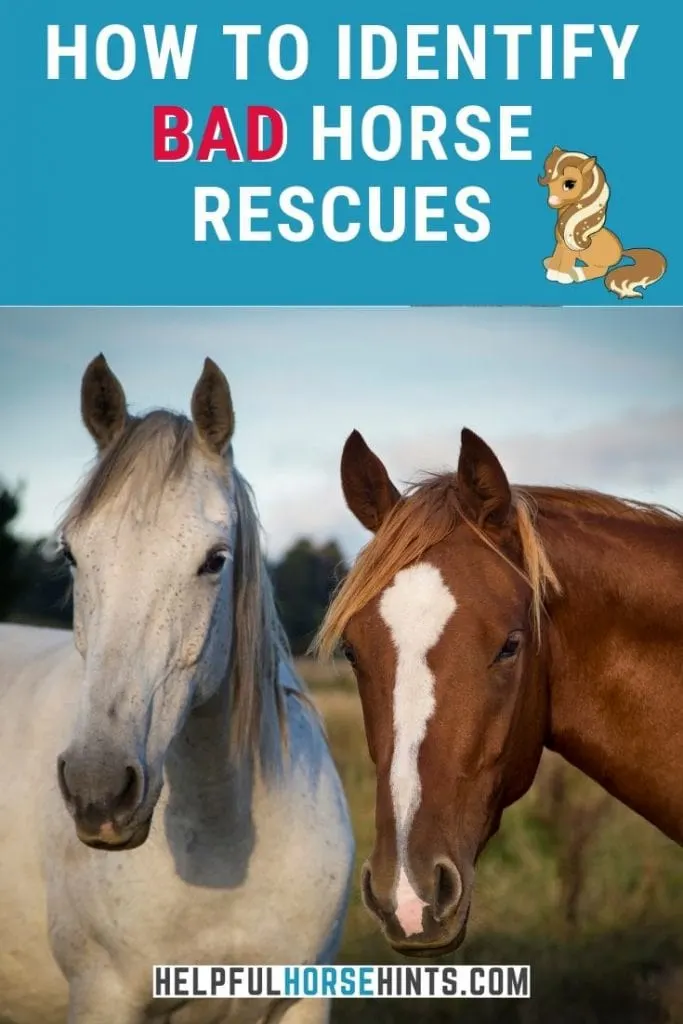
Types of Horse Rescues
Some horse rescues focus on training and adoption whereas others may just provide sanctuary for those horses that need it the most. Whatever the case may be, it is an important service that is provided to the equine community.
Both the adoption model and the sanctuary model are valid and noble ways to run a rescue. Some rescues even do a hybrid where some animals are selected for sanctuary and others are offered for adoption. Let’s look at the three common types of horse rescue and warning signs you should be on the lookout for.
Rescues the Focus on Horse Adoptions
Are they accomplishing the goals YOU want to see in an organization? Do you believe in adoption over sanctuary? If so, you should look at how actively they promote their adoptable horses.
Is it easy to see on the website which animals are available for adoption? Is it easy to find information about how to adopt? Does the organization post any statistics about the length of time to adopt?
Think about how you would feel as an adopter visiting the organizations’ website. If they don’t have one, how are you treated if you call and ask for information about adoption?
Organizations that focus on adoption will typically have more turnover, more veterinary bills, and more farrier bills. Each time a horse comes in it has to be assessed and have any medical needs addressed.
Additionally, horses rescued from auction and bad situations typically need more medical care and more feed than a “normal” horse.
Because of these things, rescues that focus on adoption typically have variable bills and rely heavily on donations.
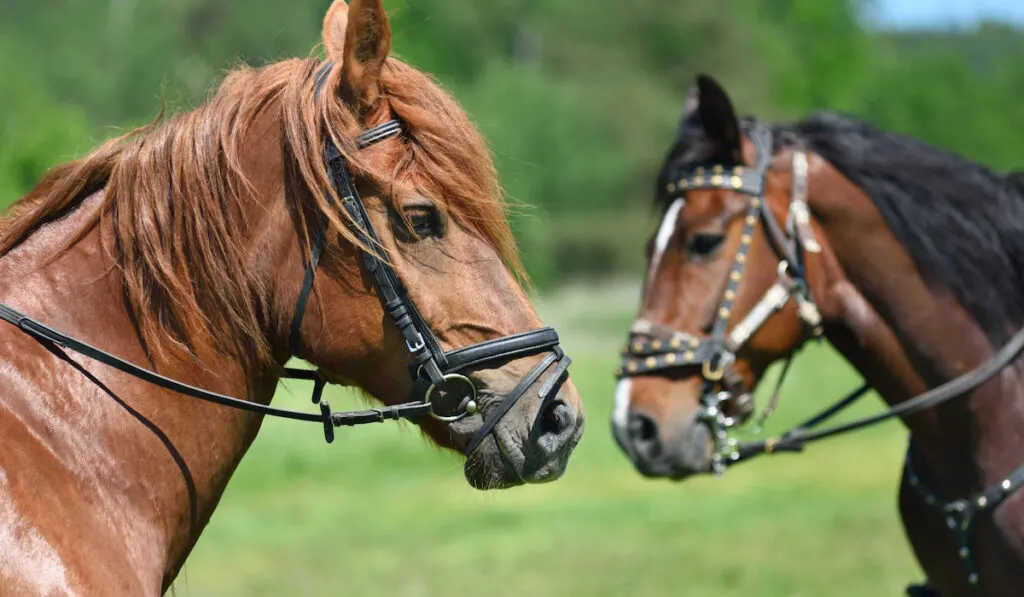
Rescues that Focus on Horse Sanctuary
Do you prefer to support sanctuaries providing lifetime care? This rescue model results in fewer animals helped but focuses instead on providing lifetime care for the few that gain residency.
When making a decision on which horse sanctuary to donate to, look at how they are actively promoting their model. Are regular updates provided for the equine residents? Do they take new animals in as older ones pass over the rainbow bridge? Does their spending/fundraising seem to be in line with the number of animals they care for?
Organizations that focus on sanctuary typically will keep each rescued horse for the life of the animal. Generally speaking they want to make 100% certain that a horse doesn’t end up in a horrible situation again and feel the best way to do that is by providing lifetime sanctuary.
Once they are filled to capacity, horse sanctuaries typically have very little turnover. A responsible horse rescue only takes in as many horses as it can handle which means that, once they are full, they must wait for one horse to pass before they can take another in.
Because the residents at a horse sanctuary are static, this type of horse rescue will typically have more stabilized financial needs. They are better able to predict the amount of funds needed for feed, veterinary care and farrier care for what should be a healthy herd.
Horse sanctuaries are still heavily dependent on donations to maintain care for these animals. Without regular donations of both time (volunteers) and money, many sanctuaries could not operate.
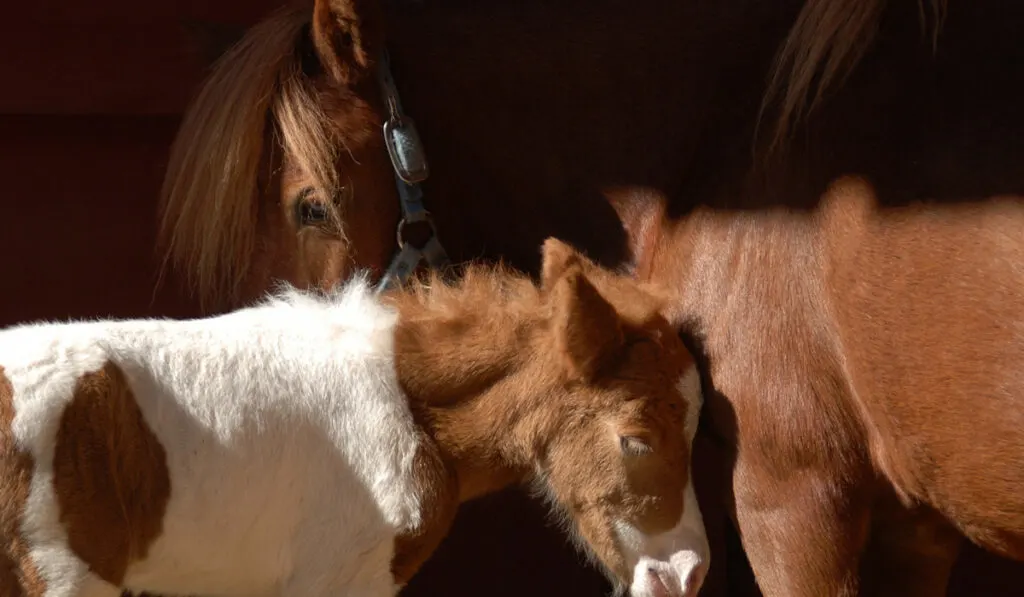
Rescues that Offer Both Adoption and Sanctuary
Organizations with this model offer both adoption and sanctuary. Typically they have a select number of horses that have permanent residence and others that are available for adoption.
One of the things to look at for this type of horse rescue is how their permanent residents are chosen. A responsible organization should be able to easily tell you why each sanctuary horse was chosen for sanctuary and not adoption.
Some good reasons a rescue may have for offering sanctuary vs adoption could be:
- The horse is a good lesson horse and can be used in summer camps or lesson programs to teach volunteers and students good horsemanship both on the ground or in the saddle.
- The horse has a chronic medical condition that requires routine maintenance most horse owners wouldn’t be capable of maintaining.
- The horse does not yet have an adequate level of training to make it safe to be adopted.
Transparency & Horse Rescue
Transparency and horse rescue are two things that go hand in hand. Keep in mind that transparency and privacy are two different things.
Does the rescue have transparency when it comes to operations and finances? Did you know that EVERY 501(c)(3) organization is required to allow their 990 tax returns to be inspected by members of the public?
It is OK for board members of a non-profit to want to keep their personal lives private. Not everybody wants their whole family in the public eye. The non-profit, however, is a public entity and the organization and it’s board members should be willing to provide reasonable information about its operations and finances, within a reasonable time, when asked.
Ask For Tax Returns
Horse rescues that file for 501(c)(3) status with the US Government basically have stated that their organization operates for a charitable purpose and does not make a profit. They must also provide their records for inspection, on location, when asked.
What does that mean? That means that you can ask any non-profit you visit to inspect their financials. The caveat here is you have to be at their physical location. They do not have to give you access to receipts, income statements, accounting reports, etc. They are only required to allow you to look at their tax returns.
If they deny you access, this isn’t something you can call the sheriff out for or force their hand in. You can, however, make a complaint to the IRS and the state but, the organization has raised a big red flag for you to consider.
Some 501(c)3 horse rescues post their tax returns online on either their website or GuideStar.org or both to make it easy for current and prospective donors to view this information.
If they haven’t filed their taxes recently, that should also be a red flag. Why haven’t they filed their taxes? If you intend to donate online, check their website, do they provide a copy of their 990 there? If not, will they email you a copy of their current one before you make a decision to donate? If they say no..you have to ask yourself why.
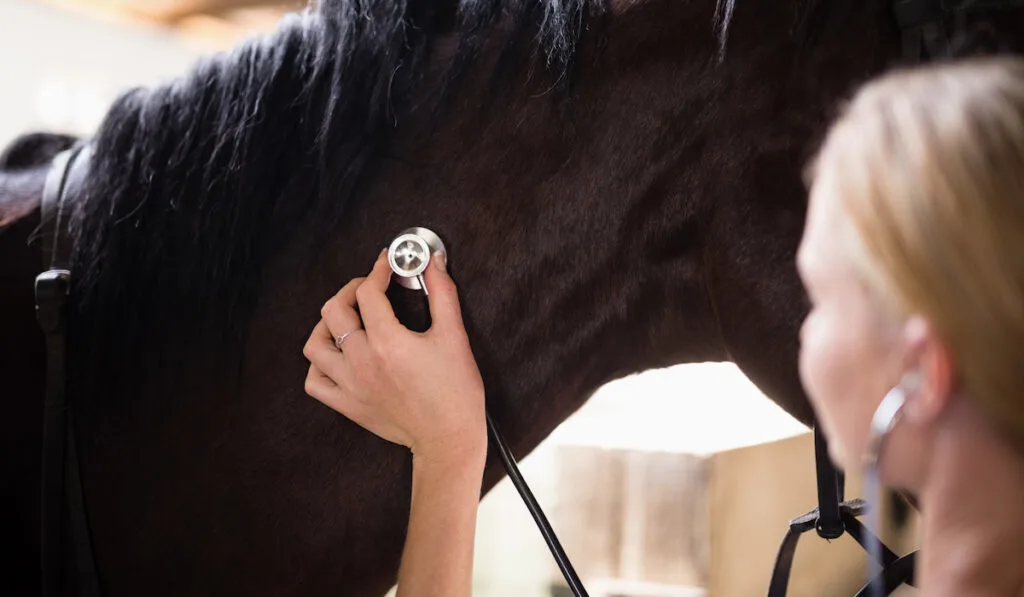
Ask For Receipts
If a rescue has solicited or raised funds for a vet bill or in anticipation of a vet bill, are they able to show proof that the bill was paid?
Did they raise money for hay last week and again this week? There isn’t anything necessarily wrong with that, horses eat hay and more is always needed, but do they show proof the hay is being purchased?
Keep in mind that non-profit organizations aren’t required to show you their receipts. They have to show the IRS if they are audited, but they don’t HAVE to show you. That being said, a horse rescue that solicits for funds for specific bills online, should reasonably be expected to post proof that bill was paid if they are asked to.
Visit The Facility
Call and ask about visiting or volunteering. Even if you live in a different state than the rescue you want to support, you can learn a lot about how they handle your inquiry. Do they give you the runaround or do they let you know what dates you can come by without hesitation?
It’s OK for organizations not to be open 24/7 to the public. Horse rescues aren’t pet shops. There are many different reasons why rescues want potential volunteers and visitors to make an appointment. These include:
- Liability & Safety Concerns. They need to make sure there is adequately trained staff to show you around.
- Horse Health Concerns. Many diseases can be brought into a facility unknowingly by visitors. Additionally, visitors who are not as horse savvy may not realize that touching a horse in a quarantine pen and then touching every other horse probably isn’t a good idea.
- They Aren’t Always On Site. Rescue operators often have jobs or maybe they are at a fair or event promoting the organization. Making an appointment ensures you aren’t going to show up to a closed and locked facility.
- They Have Lives. While I’m sure YOU would never do this, some people feel that a horse rescue should be open whenever they are ready to visit. They will drive by at 6 in the morning or 8 at night when they get off work and expect to be shown around. This just isn’t feasible.
When you can, it is great to visit the horse rescue you support or plan on supporting. Visit regularly and find out how you can volunteer. If you can’t get a clear indication of when or if they allow visitors, this should absolutely raise a concern. If their visitor schedule just doesn’t fit your schedule, that is a different story and something you will need to adjust.
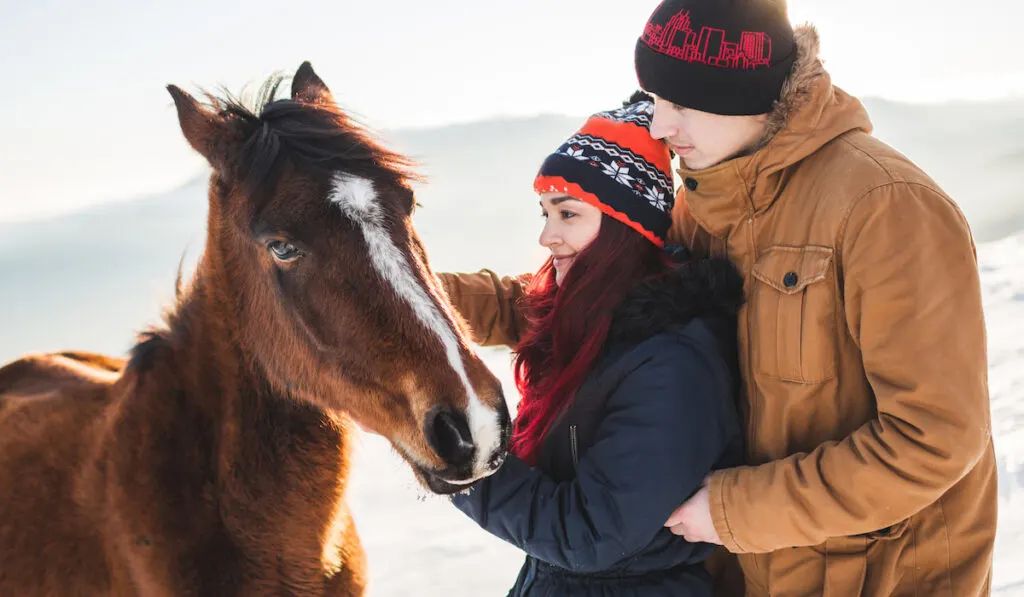
Website / Social Media Presence
When choosing a horse related non-profit think about the amount of information you want to receive. Are you donating to the local charity up the street with the veterans program that you drive by every day or are you donating to a rescue clear across the country?
I think the amount of emphasis any one donor puts on website presence and social media will vary from person to person. In today’s digital age, we expect to see updates online, we expect to be able to quickly and easily access information on a website and, we are OK with being solicited by our favorite charities online when the need arises.
Look at the horse rescues you want to donate to and make sure they are a good fit. Do they provide enough information on a routine basis to make you feel good about supporting them?
Salary / Wages
Let’s be clear…non-profit DOES NOT mean they don’t pay their staff.
I often see a big misconception that non-profit operators don’t get paid. While some organizations do work 100% off of volunteer labor, that isn’t always the case.
It is perfectly allowed to compensate members of a 501(c)3 horse rescue for the work they do. The IRS does have guidelines and salaries must be reasonable. Additionally, any board members receiving salary have to disclose the member’s name and salary amount on the 990.
Salary / Wages for non-profits are usually hourly and based on actual work performed. The amounts paid have to be voted on by the members of the board AND be reasonable for the work being performed. That means that the board can’t decide to pay a stall cleaner $150 an hour because the stall cleaner is a friend who needs the money.
I wouldn’t automatically discount a non-profit that pays one or more individuals a salary. I recommend, instead, looking at the bigger picture of their accomplishments. Some larger rescues can take a full-time staff to operate.
We can’t expect 40 – 80 hours a week from founders with no compensation. We can’t expect a horse trainer to donate all of their services for free. Think about it, could you quit your job to run a rescue? It IS OK for a rescue to pay a salary.
That being said, it’s also reasonable for you to want to know how much that salary is and make your own decision on whether or not it makes sense. That’s why reviewing the 990 is such a great idea.
If you decide that you would rather support a 100% volunteer based rescue, that’s OK too. Just know that having paid employees isn’t a red flag. Having a 990 with numbers that don’t make sense, is.

How To Donate To A Horse Rescue
So you’ve reached the point where you know what to look for in a good horse rescue and you have an idea of things that should raise a red flag. Once you have decided that the horse rescue you want to support is a good one, how can you help?
The good news is, there are a lot of ways to contribute to a horse rescue even if you don’t have money. Here are some ideas.
Monetary Donations
Monetary donations are always appreciated by a horse rescue. They help cover the “hard” expenses like feed, veterinary care, farrier bills and more.
Keep in mind when you donate funds that there are two different types of donations a horse rescue can accept:
Directed Donation: Monetary donation given by a donor to a charity designated towards a specific purpose. This can be funds for a specific animal’s care or for a particular project like a new barn or shelter.
If the rescue received more funds than were needed, they must ask the donors permission to allocate the funds elsewhere or return the funds to them.
A directed donation can be a great way to make sure that your donation dollars go towards the animals or projects you are most passionate about.
General Donations: Monetary donations given by a donor with no direction for use. In this case the charity can provide the funds wherever they are needed the most.
This type of donation is the most common. It allows the charity to decide where the funds are needed and where they should be used.
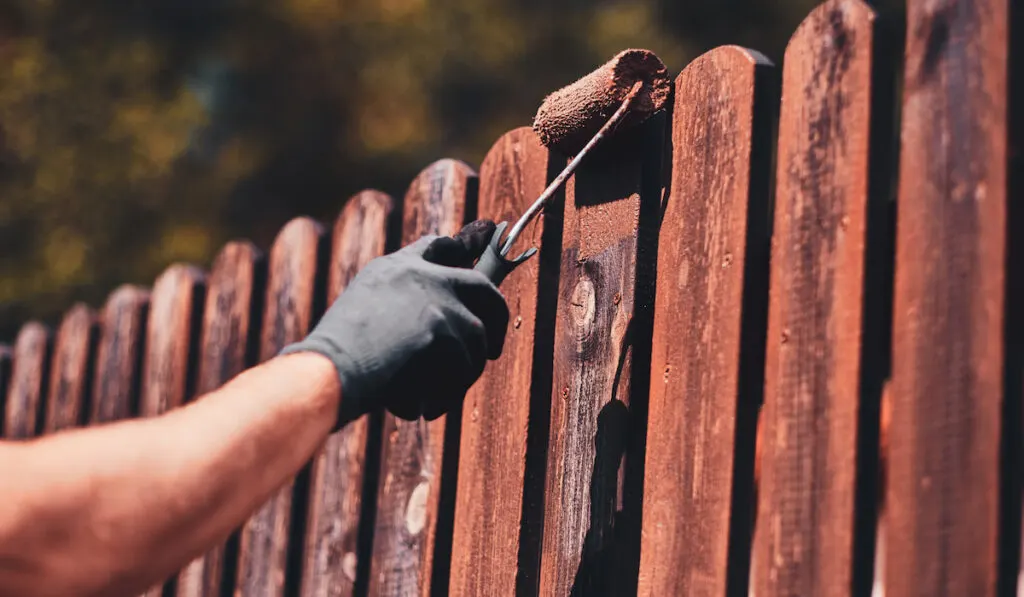
Non-Monetary Donations
Donations don’t need to be monetary! If you want to get involved but are on a budget or short on cash, find out how you can donate goods or services to help instead! Here are some no-cost ways you can help most charities as well:
- You can start with something as simple as sharing a post or request for donations on your social media pages.
- Find out how you can volunteer. Do they need help cleaning stalls, feeding horses, organizing the tool shed?
- Donate Used Items – Organize or help to organize an online auction benefiting the charity. It could be a combination of donated hand made goods, used tack, etc.
- Other Ways to Help: The possibilities are endless…are you a graphic designer, website designer, love to take photos? Great with Instagram or Twitter? Make contact with the volunteer coordinator and find out if there are other ways you can help.
Don’t hesitate to contact a charity that interests you and suggest creative ways for you to get involved. Get to know the people that run the organization. Introduce yourself and get started!
Horse Rescues That Are Not 501(c)3 Non-Profits
You don’t have to be a non-profit to be a horse rescue. You can rescue horses privately and even fund-raise as a private individual on platforms like Go Fund Me. There are some things to take into consideration when looking at donating to a horse rescue that has not achieved IRS non-profit status:
- Your donations are not tax deductible.
- The organization can make a profit.
- The organization can keep all of their financials private.
- The owner of the rescue must pay taxes on all profit.
Not having 501(c)3 status doesn’t mean a horse rescue isn’t good or isn’t looking out for the best interests of the horses in their care.
What it does mean is that you, as a member of the public, have no right to look at any of their financials and you cannot deduct your donations.
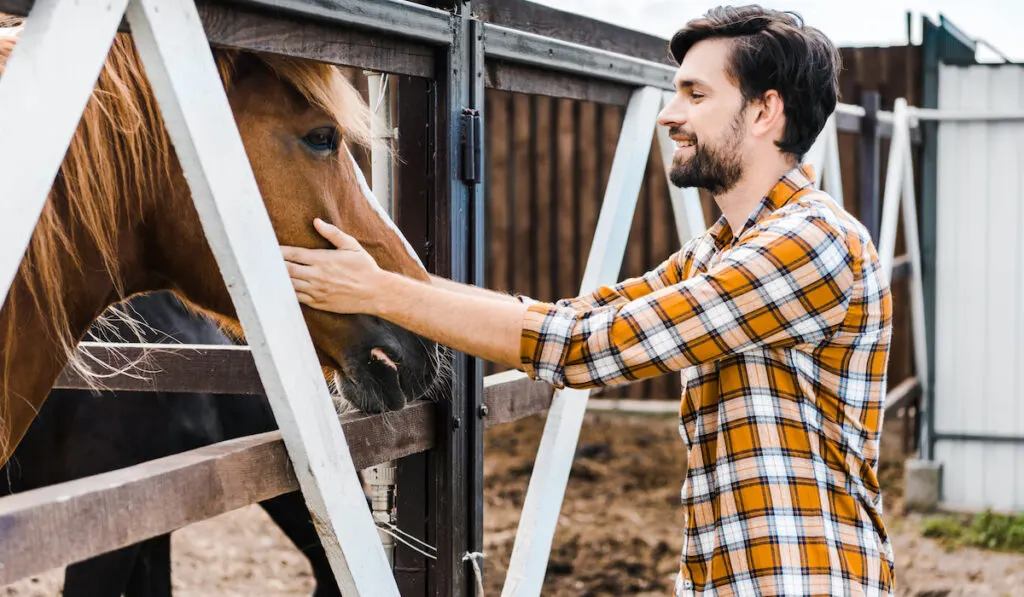
Do Your Research
When making a decision whether a horse rescue is good or bad, it all comes down to doing your research. Take all of the factors into consideration.
What do current volunteers say? Is there anything negative on Facebook? Is the negativity reasonable or something a non-horse person just didn’t understand correctly?
Thankfully, while gross neglect by horse rescues is widely publicized when it happens, the reality is most rescues really do have the horse’s best interests at heart.
Do your due diligence and donate when and where you can. Everyone feels better when they have helped a horse!
Related Questions
What is a horse rescue? A horse rescue is an organization formed to help horses who have been abused, abandoned or neglected find safe and permanent homes.
How Do You Start a 501(c)3 Nonprofit Horse Rescue?
- Find 2 other people who share your desire to help horses.
- Figure out where you will keep all the horses.
- Pick a name for the rescue.
- File your articles of incorporation with the state you want to form your rescue.
- Get an Employer Identification Number (EIN)
- Submit an application to the IRS to obtain 501(c)3 status.
- Determine which states you plan on soliciting donations in and register with the state. (source)
- Setup intake procedures, adoption processes, website, etc.
- Open for business.
Call To Action
Who is your favorite 501(c)3 Horse Rescue and Why? We’d love to see comments and feel free to link to your favorite charity in the comment box!


